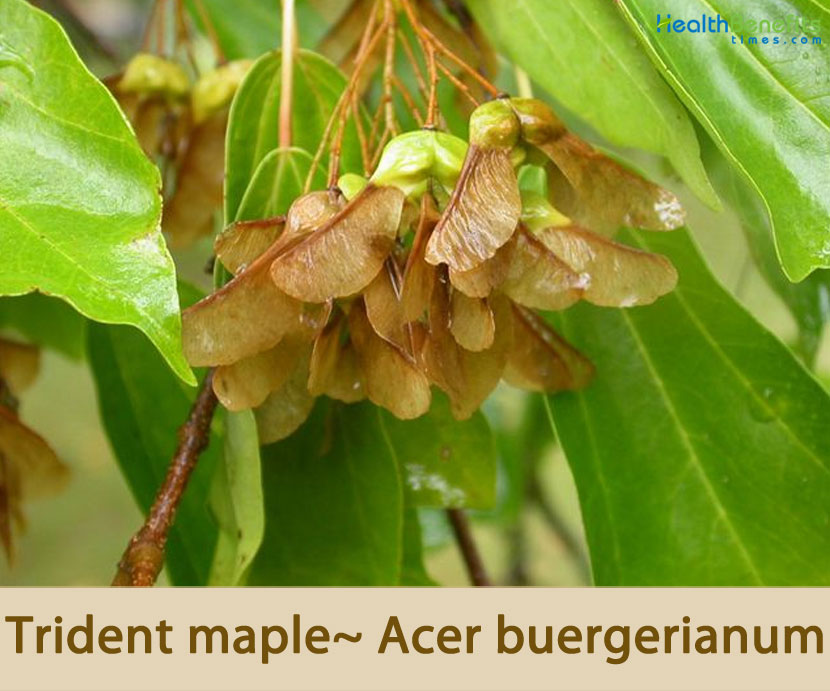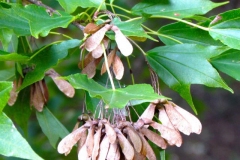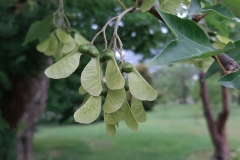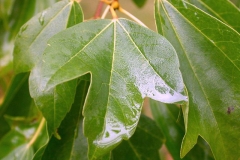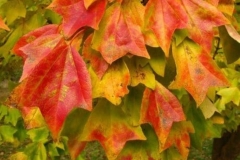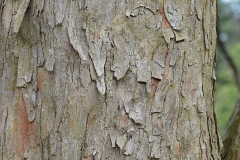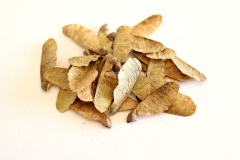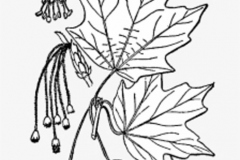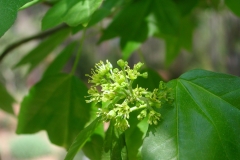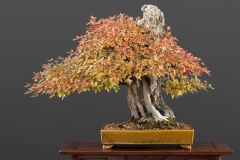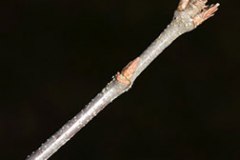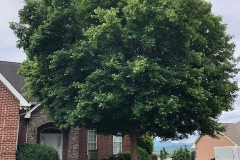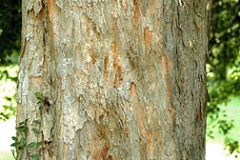| Trident maple Quick Facts | |
|---|---|
| Name: | Trident maple |
| Scientific Name: | Acer buergerianum |
| Origin | Eastern China (from Shandong west to southeastern Gansu, south to Guangdong, and southwest to Sichuan), Taiwan and Japan. |
| Shapes | Samara about 1 inch long with two winged seeds. |
| Health benefits | Treat rheumatism, bruises, hemostasis, hepatic disorders, pain, fractures, arthritis, redness and swelling of the eyes |
| Name | Trident maple |
|---|---|
| Scientific Name | Acer buergerianum |
| Native | Eastern China (from Shandong west to southeastern Gansu, south to Guangdong, and southwest to Sichuan), Taiwan and Japan |
| Common Names | Trident maple, Taiwan Trident Maple, three-toothed maple |
| Name in Other Languages | Arabic: Qiqib thulathiu alshaeb (قيقب ثلاثي الشعب) Afrikaans: Chinese ahorn, Chinese esdoring, Shinese ahorn Chinese: San jiao feng (三角枫 ) Czech: Javor Bürgerův Danish: Japansk ahorn Dutch: Trident esdoorn English: Trident maple, Taiwan Trident Maple Finnish: Kolmihammasvaahtera French: Érable à écorce de dragon, Érable de Burger, Érable trilobé, Érable trident, Érable trifide German: Dreispitz-Ahorn, Dreizahn-Ahorn, Bürgers Ahorn, Dreispitziger Ahorn, dreizähniger Ahorn Hungarian: Háromerű juhar Italian: Acero di Bürger, acero tridente Japanese: Tou kaede (トウカエデ), tô-kaede Korean: Jung-gugdanpungnamu (중국단풍나무), jung guk dan pung Persian: افرای سهسره Polish: Klon Bürgera Portuguese: Bordo tridente Russian: Klion triochrazdieĺnyj (Клён трёхраздельный) Клён trëkhrazdelʹnyj Serbian: Kineski trorežnjeviti javor (Кинески трорежњевити јавор) Spanish: Arce tridente, Arce trífido, arce tridentado, auró tridentat Swedish: Tokyolönn |
| Plant Growth Habit | Small to medium-sized, spreading deciduous tree |
| Soil | Can be planted in full sun or partial shade on any well-drained, acid soil and is quite tolerant of salt, air pollution, wind and drought. It performs well in urban areas where soils are often poor and compacted |
| Plant Size | Height of 5–20 m with a trunk up to 50 cm diameter |
| Bark | Scaly and exfoliating on larger stems, gray outer bark flakes off, revealing lighter reddish brown patches |
| Twigs | Slender, flexible, reddish brown with gray pubescence; buds conical, reddish brown sharp pointed |
| Leaf | Leaves are pendulous and are in opposite pairs, 2.5–8 cm long (excluding the 2–5 cm petiole) and 3.5–6.5 cm broad, hard, glossy dark green above, paler below, usually with three lobes |
| Flowering season | April-May |
| Flower | Non-showy, greenish-yellow flowers bloom in spring (April-May), in pendulous corymbs. They are small, with five greenish sepals and five yellow-white petals about 2 mm long, and eight stamens. |
| Fruit Shape & Size | Samara with two winged seeds, each seed 4–7 mm diameter, with a 15 mm wing; the wings are forward-pointing and often overlapping each other. |
| Plant Parts Used | Roots, leaves, husks, stems, and fruits |
| Propagation | By seeds, cuttings or air-layers |
| Lifespan | About 100 yrs |
| Season | October-November |
Leaves
Leaves are pendulous and are in opposite pairs, 2.5–8 cm long (excluding the 2–5 cm petiole) and 3.5–6.5 cm broad, hard, glossy dark green above, paler below, usually with three lobes. On mature trees the lobes are forward-pointing and with smooth margins and on young trees with more spreading lobes and serrated margins. Variable but usually attractive fall color features shades of dark red and orange. The leaf color is a rich, lustrous green in the summer that in late season turns to shades of yellow and orange.
| Leaf arrangement | Opposite/sub opposite |
| Leaf type: | simple |
| Leaf margin | Serrate |
| Leaf shape | Star-shaped |
| Leaf venation: | Palmate |
| Leaf type and persistence | Deciduous |
| Leaf blade length | Less than 2 inches, 2 to 4 inches |
| Leaf color | Green |
| Fall color | Red, orange, yellow |
| Fall characteristic | Showy |
Flower
Non-showy, greenish-yellow flowers bloom in spring (April-May), in pendulous corymbs. They are small, with five greenish sepals and five yellow-white petals about 2 mm long, and eight stamens.
| Flower color | Yellow |
| Flower characteristics | Showy |
Fruit
Fertile flowers are followed by samara about 1 inch long with two winged seeds. Each seed is 4–7 mm diameter, with a 15 mm wing. The wings are forward-pointing and often overlapping each other.
| Fruit shape | Oval |
| Fruit length | 0 .5 to 1 inch |
| Fruit covering | Dry or hard |
| Fruit color | Red |
| Fruit characteristics | Does not attract wildlife; not showy; fruit/leaves not a litter problem |
Traditional uses and benefits of Trident Maple
- These plants have been traditionally used to treat a wide range of diseases in East Asia and North America.
- Research has shown that medicinal plants belonging to Acer are highly effective in the treatment of rheumatism, bruises, hemostasis, hepatic disorders, eye disease, and pain, and in detoxification.
- It can be used to treat rheumatism, hepatic disorders, eye disease, pain, etc. effectively.
- It has traditionally been used to reduce redness and swelling of the eyes.
- Stems and roots of maple has been used for the treatment of arthritis, bruises, pain, fractures, and liver diseases and the leaves are used for the treatment of inflammation of the eye.
Other Facts
- Trident maple is a popular choice for the art of bonsai and responds well to techniques that create leaf reduction and ramification.
- It is suitable for many style and sizes of bonsai.
- It can be planted more around residences and commercial landscapes due to its pleasing form and small size.
References:
https://www.itis.gov/servlet/SingleRpt/SingleRpt?search_topic=TSN&search_value=837859#null
https://npgsweb.ars-grin.gov/gringlobal/taxon/taxonomydetail?id=1088
https://www.missouribotanicalgarden.org/PlantFinder/PlantFinderDetails.aspx?kempercode=b972
https://gd.eppo.int/taxon/ACRBU
http://www.theplantlist.org/tpl1.1/record/kew-2615419
https://en.wikipedia.org/wiki/Acer_buergerianum
https://edis.ifas.ufl.edu/publication/ST009
https://www.cabi.org/isc/datasheet/2807
https://plants.usda.gov/home/plantProfile?symbol=ACBU4


